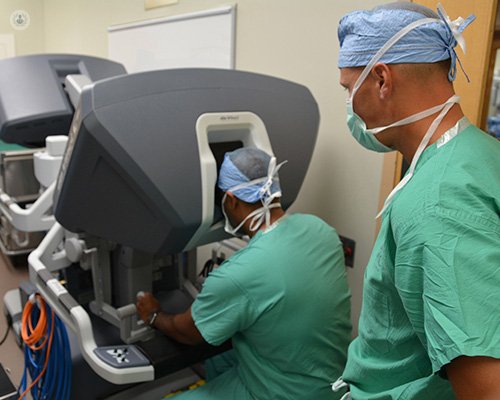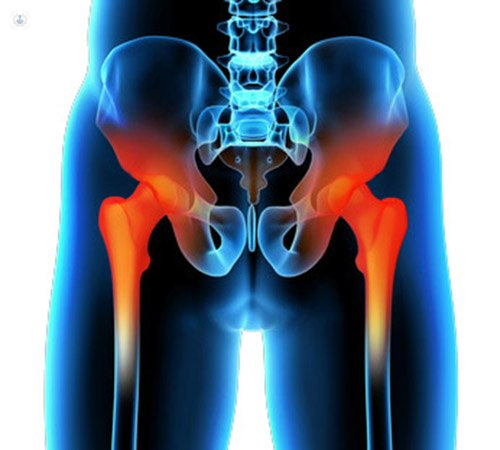Robotic surgery for hip and knee replacement surgery: what you should know
Escrito por:The technological advancements that have been introduced into modern-day society have greatly enhanced how surgery can be performed, particularly hip and knee replacement surgery.
In our latest article here, highly esteemed consultant trauma and orthopaedic surgeon, Mr Asif Parkar, explains in detail how exactly robotics are used in hip and knee replacement surgery.

How are robotics used in orthopaedic care and in your practice?
There are different orthopaedic robots available in the market. There is only one that performs on both the hip and the knee. This is called Mako. This is the one I use in my practice. It is used in both hip and knee replacement.
Essentially, when you perform a hip replacement, you need the components to perform the replacement to be in an accurate position, to ensure the joint does not dislocate. The robot can accurately tell you the patient’s leg length.
The human eye cannot detect one, two, or three millimetres, but the robot can, during the operation, precisely interpret these readings, and can make adjustments accordingly, so that the leg lengths are compatible. The components can then be placed exactly where we want them to be placed because the robot provides us with live feedback.
A pre-operative CT scan will be necessary when using this specific Mako robot. Every patient has different bone shapes and sizes, so this specific CT sequence records the patients’ bone morphology.
Therefore, before we start the operation, we already know what the patient’s bone size is and what components they will require for an accurate hip replacement to be performed. When it comes to knee replacement, a CT scan will be performed on the patient beforehand. When we make the bone cuts, the bone resection is minimal, and the robot tells you the exact alignment. So, for the knee, we want to balance it, so we will want to see how it is when it is fully bent and when it is straight. They should be equally balanced, and the robot can guide you with this.
What are the benefits of robotic surgery in comparison with traditional open surgery?
With the robot, you get live feedback during the operation. You thus have the option to make changes as you go along. It is far more accurate when compared with traditional open surgery.
How is a hip replacement through a direct anterior approach carried out?
When performed on a suitable patient, it is performed through an anterior approach. In the first six weeks, the recovery is much, much quicker, as you are going in between muscle. The component position is very good. The results are almost always good.

Is the procedure safe?
The procedure is very safe, but we need to be aware of the fact that most of the time, at least two assistants are required for a safe procedure to take place.
How long does it take to recover?
Recovery is generally quick thanks to the technology used. Patients will typically be fully recovered after six weeks.
Mr Asif Parkar is a highly esteemed consultant orthopaedic and trauma surgeon who specialises in hip and knee replacement surgery. If you are considering undergoing one of these surgical operations, don’t hesitate to visit his Top Doctors profile today to book a consultation with him.


